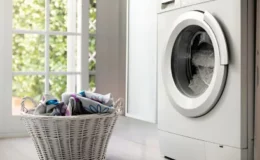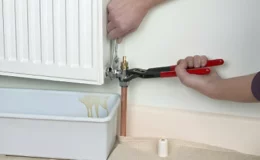
How to maintain Oven?
If you want anything to last for a long time you will look after it – right? In this article we will explore some of the best practices to maintain your oven, that will hopefully keep your oven spic and span and working for a long time.
Ever imagined what it’s like to be without an oven (you may have already experienced this) and the inconvenience caused?
The oven can get a real hammering depending on the size of the family and your culinary motivation. Being without an oven is like a fireman without a ladder! Every time it’s used a film of grease or food deposits from spillages builds up over time on the racks and the oven’s interior. While making full use of our oven, we tend to neglect simple maintenance that can avoid any major problems in the future. After all, you don’t want to be without an oven on Christmas day when all the family has arrived full of expectations!
Open that oven door (oven off) and peer inside, turn on the oven light can you see the illuminated bulb underneath that scorched burnt-on deposit? If not it’s in need of a much needed clean. The job becomes more difficult when the burnt food deposits have carbonized and stuck like the proverbial to a blanket! All of which goes on behind your back, there’s a lot going on in the oven during the cooking process whilst your favorite dish is cooking.
A major oven clean is the bottom of the list when it comes to cleaning tasks. Why, because it takes so long, not to mention the effort needed. Elbow grease comes in all different packages from 1 liter to 3 liters and above. It depends on how long your faithful oven has been neglected as to the elbow grease and time required to remove that baked in grime!
Over time the oven gets dirtier, consequently turning the cleaning process into a massive chore that may take all morning or afternoon. Also, recent surveys suggest ‘oven cleaning’ is one of the most detested household chores. If your oven is a ‘grime scene’ and you don’t fancy doing the job yourself there are many deep oven cleaning companies who will happily oblige. Google them.
The following tips will help to maintain your oven and minimize the chances of a ‘major’ clean.
So let’s get on with it:
The self-cleaning feature
Designed to do just that so you don’t have to do it, well almost. The process involves taking the oven up to extremely high temperatures of 400-480 degrees, far in excess of normal baking or cooking temperatures. Depending on the make and model of the oven it usually self locks during the cleaning process, for obvious reasons.
The high temperatures reduce the food residues spillages etc. to ashes. Unfortunately, many think the oven will be sparkling like a new one, sadly not. That’s where you come in with your trusted cloth, oven cleaner, and an amount of elbow grease.
Using ‘high’ temperature cleaning too frequently could impact on the oven’s electrical components. Check with the manufacturer who will advise how many times the high-temperature self-clean function should be used per annum.
At the end of the cleaning process take a soft bristle brush (paintbrush) sweep up the ashes/dust in the oven or use a vacuum cleaner. Obviously, wait for the oven to cool down first. Once the leftovers have been gathered up you can move in with your rubber gloves and an appropriate oven cleaner.
Clean it regularly
Manufacturers may suggest a ‘high’ temperature clean at least twice a year if used occasionally?
If your oven is used constantly every daily, chances are you will need to clean it more often? It may go from twice to four times a year on a self-clean cycle? Clean off the burnt food scraps and spills as you go it saves time in the long run. It will reduce the chances of burnt food smells mixing with your culinary dish and baffling people? Is it coq au vin or burnt rubber?
Clean it without heat
One cheap and cheerful way to clean the oven is with boiling water. Follow the steps below:
- First, put a bowl of boiling water at the bottom of the oven or on one of the racks and shut the door. The stream helps to soften the food deposits.
- Now mix a solution of ½ cup baking soda and water into a stiffish paste. Vinegar is a good alternative to water if you want a stronger solution. Apply to the racks.
- Once you’re sure the chemical reaction between water/vinegar/baking soda is complete, place them in the dishwasher. Before they go in the dishwasher give them a rub down with a Scotch Brite pad to remove any really stubborn deposits. The oven is now rack free and cleaning of the interior can begin..
- You may want to stay with the vinegar/baking soda paste recipe? Coat the roof, bottom and sides of the oven with the mix. Avoid coating the heating elements.
- Leave over overnight.
- Then with a soapy warm water solution wipe down the oven removing the paste residues.
Your oven should now look like new if not repeat?
All electrical appliances should be isolated for safety reasons before the cleaning process.
Safety IS NO accident Working with liquids close to a source of electricity is dangerous if the supply is not isolated. Having a hairstyle looking like it’s been styled by Southern Electricity is not good for your image, so please turn off the supply from the fuse box before proceeding.
Take care while baking
If you are baking something which is likely to spill over, place some foil underneath the dish. If anything is going to stick, it sticks to the foil, Afterwards, the foil can be thrown in the recycling bin. Clean up any oven leftovers, it might not seem much but in the long run it will save time and effort.
Check the door seal
The door seal plays an important part in preventing heat loss and ruining your recipe.
In time the seal will deteriorate and will need replacing. Check the door seal from time to time especially if your oven is old and you suspect heat is escaping.
Check the fan
To keep a constant and uniform temperature throughout then keep the fan clean.
If there is an unusual knocking noise coming from the fan or it keeps sticking the chances are the spindle bearings are worn. If this is the case a new motor is needed.
This repair requires taking off a panel at the rear of the appliance and recommend a qualified appliance engineer attends to complete the repair.
Call serviceteam Ltd. if you need help with a faulty appliance or visit our website at serviceteam.co.uk






